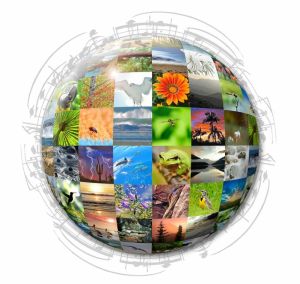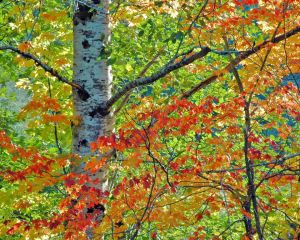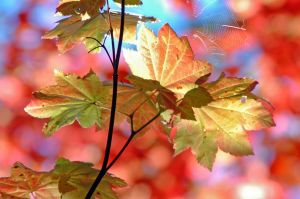Artist: Gordon Hempton
Contact: http://soundtracker.com/
and: https://quietplanet.com/
 It is my great pleasure to shine a spotlight on Gordon Hempton, a man who is not only known for some of the world’s finest recordings of nature sounds, but also for having devoted his life to protecting our few remaining silent havens in the natural world from noise pollution. As a self-described “acoustic ecologist,” working under the name The Soundtracker®, he has circled the globe three times over the last 30 years in pursuit of Earth’s most rare nature sounds – which can only be fully appreciated in the absence of man-made noise. Gordon’s work with recording and preserving the sounds of the natural world has been compared with Ansel Adam’s capturing its’ beauty on film. His recordings of steadily vanishing natural soundscapes have been written about and reviewed in People, Time, Newsweek, and many more American and international magazines. He has also provided sounds for numerous television documentaries including the PBS documentary Vanishing Dawn Chorus, which earned him an Emmy. In the late 80’s and early 90’s Gordon became well known for two series of nature sound recordings (including over 60 titles) on the Miramar label which made him one of the most highly reputed and best-selling environmental recording artists in the world.
It is my great pleasure to shine a spotlight on Gordon Hempton, a man who is not only known for some of the world’s finest recordings of nature sounds, but also for having devoted his life to protecting our few remaining silent havens in the natural world from noise pollution. As a self-described “acoustic ecologist,” working under the name The Soundtracker®, he has circled the globe three times over the last 30 years in pursuit of Earth’s most rare nature sounds – which can only be fully appreciated in the absence of man-made noise. Gordon’s work with recording and preserving the sounds of the natural world has been compared with Ansel Adam’s capturing its’ beauty on film. His recordings of steadily vanishing natural soundscapes have been written about and reviewed in People, Time, Newsweek, and many more American and international magazines. He has also provided sounds for numerous television documentaries including the PBS documentary Vanishing Dawn Chorus, which earned him an Emmy. In the late 80’s and early 90’s Gordon became well known for two series of nature sound recordings (including over 60 titles) on the Miramar label which made him one of the most highly reputed and best-selling environmental recording artists in the world.
In 2010 Gordon Hempton became a published author, writing a book entitled One Square Inch of Silence: One Man’s Quest to Preserve Quiet, (Free Press/Simon & Schuster) with co-author John Grossman. The book follows in the footsteps of Rachel Carson’s classic: Silent Spring, and not only documents his recording work but serves as a call to action to preserve our diminishing natural spaces from species extinction, habitat loss, and especially noise pollution. According to Gordon: “Quiet places are the think tank of the soul.” He goes on to say: “Uninterrupted natural quiet is so rare I think many people under the age of 30 have never heard it. Whenever someone tells me they know a quiet place, I figure they have an undiagnosed hearing impairment, or they weren’t really listening. Most people believe they know what natural quiet is, but they have not had the experience; it is not the same thing as sitting in an empty theater, a  church, or a library.” Also in 2010, a documentary film by Nicholas Sherman, entitled, SOUNDTRACKER: A Portrait of Gordon Hempton was released, which follows Gordon as he travels the Pacific Northwest with his recording equipment in search of pristine nature sounds. World-famous film maker Ken Burns had this to say about the documentary: “This is a remarkable journey: a quest for imperiled Nature by an artist who never stopped listening.” An excellent two minute trailer for the film can be seen at Gordon’s website. In speaking of the book and the documentary, Gordon shares: “Together, these two major works have transformed my life from nature listener to nature spokesperson. I travel widely to speak about what the Earth is telling us—if only we listen.
church, or a library.” Also in 2010, a documentary film by Nicholas Sherman, entitled, SOUNDTRACKER: A Portrait of Gordon Hempton was released, which follows Gordon as he travels the Pacific Northwest with his recording equipment in search of pristine nature sounds. World-famous film maker Ken Burns had this to say about the documentary: “This is a remarkable journey: a quest for imperiled Nature by an artist who never stopped listening.” An excellent two minute trailer for the film can be seen at Gordon’s website. In speaking of the book and the documentary, Gordon shares: “Together, these two major works have transformed my life from nature listener to nature spokesperson. I travel widely to speak about what the Earth is telling us—if only we listen.
Gordon’s latest project, which I am proud to be affiliated with, is a new company called Quiet Planet, that provides Gordon’s nature sound libraries to producers of music, film, TV, video, radio, games, museum exhibits, educational  organizations, websites, phone apps, online publications, and more with award-winning media at an affordable price. Their flagship product at the moment is comprehensive collection of approximately 140 sounds, entitled Essentials. As a “best of” compilation, it includes sounds of wind, rain, thunder, ocean, streams, a wide variety of birds, insects, wildlife, and more. Personally speaking, as someone involved in the new age music genre as a recording artist, producer, and music reviewer with 30 years of experience, I’ve heard a lot of nature recordings as well as music that uses nature sounds. But I’ve never experienced any that have the lifelike quality and incredible sense of depth and presence as the sounds of Quiet Planet. When I first listened with headphones to the recordings of thunder, a couple times I felt compelled to take the headphones off to make sure that my external speakers weren’t on because the sound was so omnipresent, that it seemed to be coming from beyond the headphones, filling the room. It’s hard to describe, but there is an immersive quality to the sounds that has to be heard to be believed. It’s like the auditory equivalent of watching a movie in 3-D.
organizations, websites, phone apps, online publications, and more with award-winning media at an affordable price. Their flagship product at the moment is comprehensive collection of approximately 140 sounds, entitled Essentials. As a “best of” compilation, it includes sounds of wind, rain, thunder, ocean, streams, a wide variety of birds, insects, wildlife, and more. Personally speaking, as someone involved in the new age music genre as a recording artist, producer, and music reviewer with 30 years of experience, I’ve heard a lot of nature recordings as well as music that uses nature sounds. But I’ve never experienced any that have the lifelike quality and incredible sense of depth and presence as the sounds of Quiet Planet. When I first listened with headphones to the recordings of thunder, a couple times I felt compelled to take the headphones off to make sure that my external speakers weren’t on because the sound was so omnipresent, that it seemed to be coming from beyond the headphones, filling the room. It’s hard to describe, but there is an immersive quality to the sounds that has to be heard to be believed. It’s like the auditory equivalent of watching a movie in 3-D.
I was interested to learn that there is no studio processing done to enhance the sounds. Gordon emphasizes that these are totally “live,” as captured in the moment of recording. He goes on to say: “It cannot be emphasized enough how selecting the right location is critical. I spend a lot of time pouring over maps, making phone calls, and then taking my best guess for when to go. Once on location I listen for the sweet spot– where it all comes together.” He uses the best equipment and technology available such as the Neumann KU-81i microphone, and explains: “This binaural microphone system works over speakers and headphones and does an amazing job of capturing the experience of being there. It is the closest system to human hearing that I have found and I have tested nearly all.”
As can be imagined, trekking around the world through remote areas, swamps, volcanoes, tropical jungles, and more is not without its dangers. According to Gordon: “Nothing worthwhile comes easily. I’ve waded past crocodiles (don’t do it), paddled a canoe at night through tidal currents, lost expensive gear to an unexpected ocean wave, been sick for months with more than one tropical disease, and once I just downright wept because the sound I came for doesn’t  exist anymore.” Although it can be daunting at times, being out in nature is a form of spirituality for Gordon. As he explains: I really can’t say that I’m religious today, although I am spiritual. I don’t go to church that’s inside of buildings, but I do go to church that’s outside. My favorite church of all is what I call the ‘cathedral of the Hoh Rain Forest at Olympic National Park’. It has the world’s tallest trees, over 300 feet high, and it’s there that the least amount of noise pollution intrudes of anywhere else in the United States.”
exist anymore.” Although it can be daunting at times, being out in nature is a form of spirituality for Gordon. As he explains: I really can’t say that I’m religious today, although I am spiritual. I don’t go to church that’s inside of buildings, but I do go to church that’s outside. My favorite church of all is what I call the ‘cathedral of the Hoh Rain Forest at Olympic National Park’. It has the world’s tallest trees, over 300 feet high, and it’s there that the least amount of noise pollution intrudes of anywhere else in the United States.”
When it comes to recording and preserving the diverse sounds of our planet which he refers to as a “solar powered jukebox,” as well as working to protect natural habitats, Gordon Hempton has put it all on the line. Although he is devoted to his work and is humble about his accomplishments, I’ll share a few of the many accolades he has received to serve as a fitting conclusion to this article:
“Gordon Hempton brings new meaning to the word purist. He meticulously scouts out sites for his soundscapes… Hempton is totally in touch with his environment as a listener, and he is committed to bringing what he hears to a wider audience.”
Smithsonian
“His recordings will immortalize the few remaining quiet corners of the Earth.”
San Francisco Examiner
“Someday Gordon Hempton’s recordings may be heard as the last echo of nature at its most natural.”
Philadelphia Inquirer
“Your ears are caressed by resonant acoustical poetry.”
The Seattle Times
“America’s foremost guru of quiet.”
USA Today
“Pure, unedited nature… a blend of science and poetry.”
Omni
“After a while we begin to sense that it is silence that is our greatest teacher. The interval between musical notes. The pauses in a play or speech or conversation. The awe-inspiring cloisters of our civilizations. But it is in nature, as this wonderful gem of a book reveals, that we find the real blessing of silence.”
Ken Burns, filmmaker
I highly recommend the Essentials collection from Quiet Planet to anyone who uses (or knows anyone who uses) nature sounds in their work. Readers of Music and Media Focus can receive 10% off the purchase of Essentials by clicking on this link, or visiting their website and using the code QuietPlanet. There is a demo of the sounds at the site. In addition, a portion of all sales will go to supporting non-profit ecological organizations.

